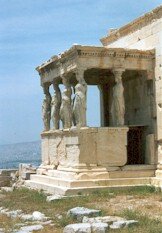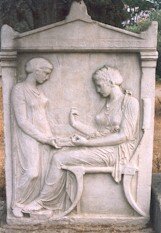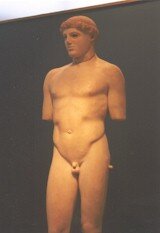Athens
 |
Athens has been a city for well over 3,000 years, and reached its glorious zenith the best part of five centuries before the birth of Christ. The legacy of ancient Greece - and of the leading city-state of Athens in particular - on democracy, philosophy, and art is immeasurable.
Remnants of this legacy can still be seen today, most notably the 2,500 year-old series of buildings on the Acropolis. Dominating the skyline of Athens, the Acropolis features the mighty Parthenon temple, built to celebrate victory over the invading Persians at Marathon. A triumph of architecture and sculpture, the Parthenon is justly celebrated as a symbol of ancient Greek cultural achievement.
Unfortunately, the Parthenon's crowning glory - it's magnificent sculptural work - was 'sold' by the occupying Turks to Britain's Lord Elgin in 1801. To get a real appreciation of this artistic high tide mark you'll need to visit the British Museum.
The interesting Acropolis museum in the shadow of the Parthenon features the remains of an even older temple from this site, and the Acropolis features other temples dating from ancient times. The world-famous Porch of the Caryatids (where statues of women feature as columns supporting the roof; see picture above) is a key feature of one.
 |
Lying below the Acropolis are a wealth of ancient and more recent sites of interest. The Roman Theatre of Herodes Atticus is still used for outdoor concerts, and on the other side of the Acropolis is the extensive Agora (or marketplace). The impressive Tower of the Winds is nearby, and slightly further afield is the interesting Kerameikos cemetery and Sacred Way of the ancient city.
When you've had enough exposure to ancient culture, the winding lanes of the picturesque Plaka district below the Acropolis is a great place to engage in some retail therapy. The historic heart of Athens, the Plaka is now geared up to serve the (sometimes questionable) tastes of the tourist hordes. Still, there are enough good cafes, restaurants, and quality shops to please the fussiest visitor.
The Plaka and adjacent Monastiriki areas showcase not only the ancient heritage of Athens, but also its more recent religious and cultural contributions. Tiny domed Orthodox churches such as Panagia Gorgoepikoos and the icon painters of Athens are very visible signs of a nation where faith is still a key facet of everyday life.
 |
Athens is also a modern city, with bustling shopping areas, restaurants, and nightlife. The noise and (periodic) pollution - not to mention the mad taxi-drivers - can overwhelm the faint-hearted, but Athens has enough quiet corners (such as the excellent National Gardens) and indoor havens of calm (the 'must see' collection of artefacts at the National Archaeological Museum) to allow a pleasant escape from the crowds.
Athens is of course a gateway to the magnificent Greek islands, most typically through the chaotic ferry port of Piraeus (an easy metro ride from the centre). A new airport on the outskirts of Athens (45-60 minutes by taxi) is a huge improvement on the old facility, and will probably be your introduction to the city.
The Greeks are also renowned for their simple but tasty food - souvlakia, moussaka, seafood, Greek salad, cheese pie, and 101 uses for olives. The Diogenes Taverna at Lysikratous Square in the Plaka district is an excellent choice that services both locals and tourists.
Getting There
British Airways and Olympic are the key carriers to Athens. Flight time is approximately 3.5 hours.
More Information
Check out Athens Guide, Go Greece, or (for ferry information) the useful Ferries portal.
Also visit our Greek Island guide.
|





